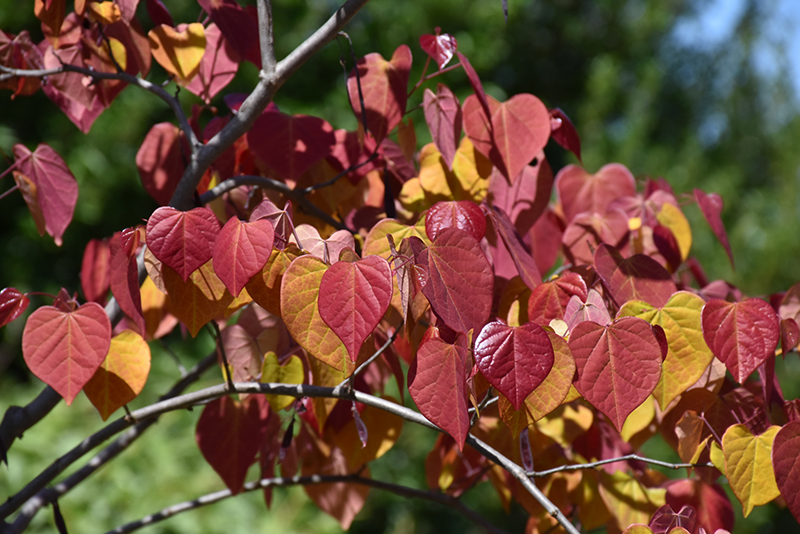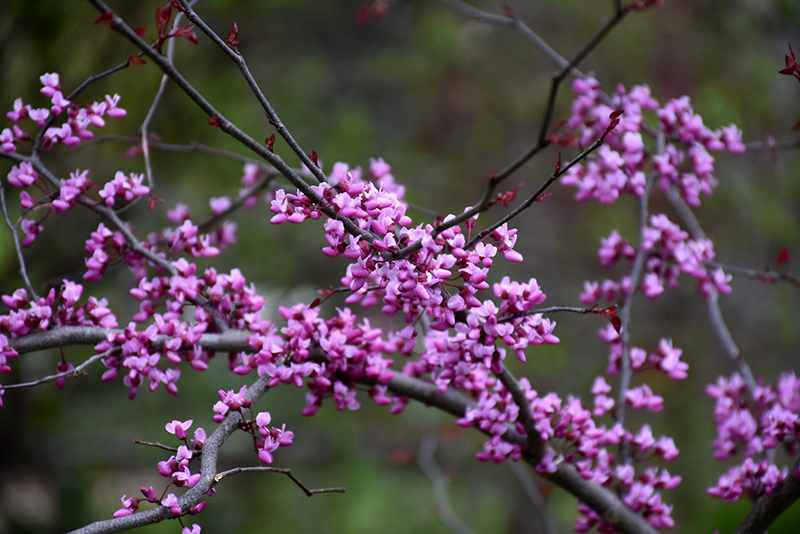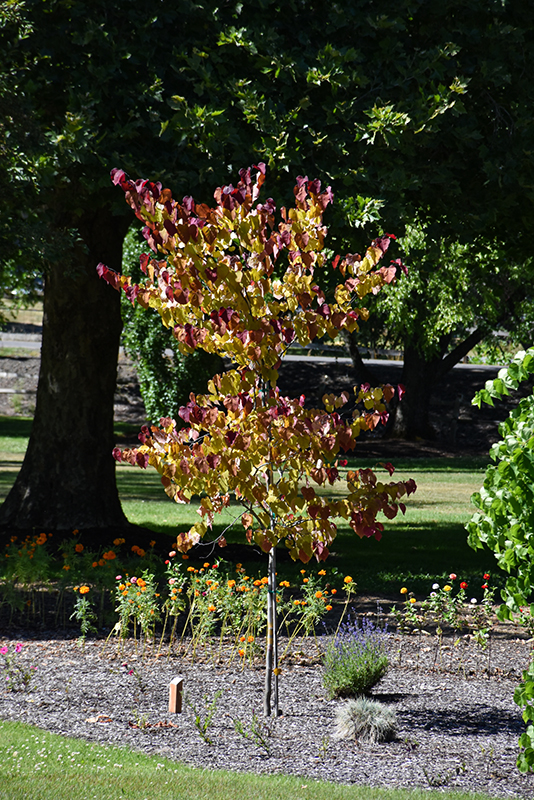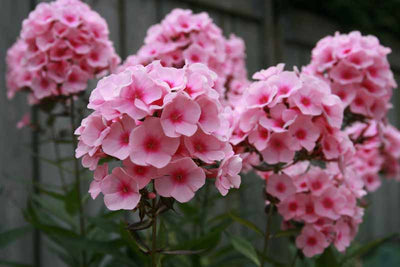Plant Library
Flame Thrower® Redbud
Cercis canadensis 'NC2016-2'
Height: 20 feet
Spread: 15 feet
Sunlight:
![]()
![]()
Hardiness Zone: 5a
Other Names: Eastern Redbud, Judas Tree, Love Tree
Brand: Star Roses and Plants
Description:
A spectacular small ornamental tree featuring perfectly pink flowers in early spring, followed by stunning burgundy-red new leaves that mature to bright yellow and green; color display is persistent throughout the season; a great landscape accent
Ornamental Features
Flame Thrower® Redbud features showy hot pink pea-like flowers with dark red calyces along the branches from early to mid spring before the leaves. It has attractive yellow-variegated lime green foliage with hints of red which emerges burgundy in spring. The glossy heart-shaped leaves are highly ornamental and turn outstanding shades of orange and in the fall.
Landscape Attributes
Flame Thrower® Redbud is a deciduous tree with an upright spreading habit of growth. Its relatively coarse texture can be used to stand it apart from other landscape plants with finer foliage.
This is a relatively low maintenance tree, and should only be pruned after flowering to avoid removing any of the current season's flowers. It is a good choice for attracting bees and butterflies to your yard, but is not particularly attractive to deer who tend to leave it alone in favor of tastier treats. Gardeners should be aware of the following characteristic(s) that may warrant special consideration;
- Disease
Flame Thrower® Redbud is recommended for the following landscape applications;
- Accent
- Mass Planting
- Hedges/Screening
- General Garden Use
Planting & Growing
Flame Thrower® Redbud will grow to be about 20 feet tall at maturity, with a spread of 15 feet. It has a low canopy with a typical clearance of 2 feet from the ground, and is suitable for planting under power lines. It grows at a medium rate, and under ideal conditions can be expected to live for 60 years or more.
This tree does best in full sun to partial shade. It prefers to grow in average to moist conditions, and shouldn't be allowed to dry out. To help this plant achive its best flowering performance, periodically apply a flower-boosting fertilizer from early spring through into the active growing season. It is not particular as to soil type or pH. It is highly tolerant of urban pollution and will even thrive in inner city environments, and will benefit from being planted in a relatively sheltered location. Consider applying a thick mulch around the root zone in winter to protect it in exposed locations or colder microclimates. This is a selection of a native North American species.







